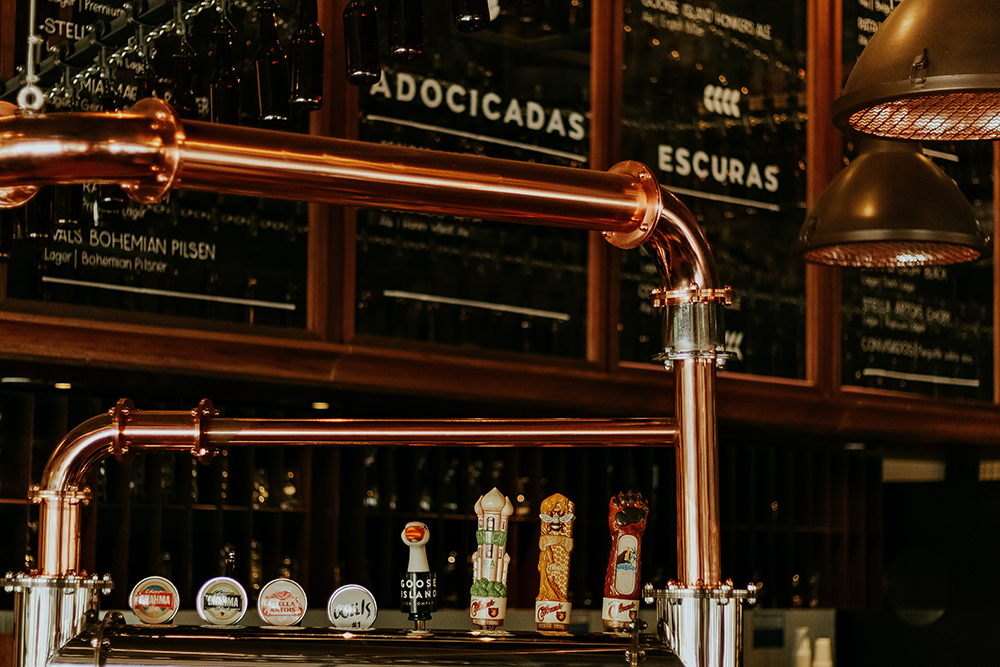How Profitable Are Breweries? (2024 Edition)

Since the pandemic, we’ve seen an increase in the opening of craft breweries across the United States.
In fact, the number of operating craft breweries continued to climb in 2022, reaching an all-time high of 9,552, including 2,035 microbreweries, 3,418 brewpubs, 3,838 taproom breweries, and 261 regional craft breweries, according to beerandbrewer.com.
But just because the brewery business is popular, does that mean it’s profitable?
Or are too many business owners jumping into the brewing industry only to end up stressed and out of cash.
In this blog, we’ll take a look. Just how profitable are breweries?
Which is More Important: Revenue or Profit?
While both metrics are incredibly important for financial health, profit is a more accurate measure of success as it measures what the business keeps after all expenses.
You could have $1,000,000 in sales (revenue) at your brewery, but have $999,000 in expenses, and keep $1,000. You probably won’t get out of bed for $1,000/year.
There are times when revenue is an equally important metric, such as when you are selling the business, as it indicates your overall growth and ability to attract sales.
However, for the purposes of this blog, we’re going to stick to profits, because that’s what we’re all in business for… to earn more than we spend.

How Profitable are Breweries?
So, onto the important question: how profitable are breweries?
Compared to similar business models such as a restaurant or bar, breweries are extremely profitable.
The average profit margin for breweries is typically around 20%.
And according to Beverage Trade Network, a “good” profit margin for a brewery is around 25% or higher.
If we compare this to a restaurant, it’s significantly higher, as profit margins for restaurants tend to average around 5%.
Which means that brewery owners take home a lot more money, right?
Not quite. It all goes back to how the business is set up.
A brewery needs a lot more investment in its machinery and personnel than a restaurant.
And simple maintenance costs can vary greatly. Restaurant owners may need to replace a dishwasher, while brewery owners may need to replace a $30,000 tank.
Breweries take a lot of cash up front, and they also have to reinvest the money year on year to keep up with growth and demand, so brewery owners rarely get to keep the money from their high profits.
This means that the 20% profit is often re-invested back into the business, rather than being distributed as personal income to the owners.
This is important to understand, especially when you finance your business with debt or outside investors. They need to know that any early returns will need to be reinvested.
The bottom line? A higher profit margin does not necessarily translate to more cash.
How Long Until Your Brewery Will Be Profitable?
When first opening a brewery, there are many start up costs to consider, such as equipment purchasing, permits and licenses, and contingency funds.
Therefore, you’re unlikely to break even, or become profitable during your first year in business.
On average, it takes 3 years for a new brewery to become profitable according to kissmybrew.com.
We recommend focusing on building a solid, growing foundation in your early years of business; don’t focus on profitability too much.
However, just because on-the-books losses are normal, your cash flow should always remain stable. If it’s not, we strongly recommend working with an experienced brewery accountant before a lack of cash tanks your entire idea.
How Can You Increase Your Brewery Profit Margins?
There are a few things you can do to increase the money you take home from your brewery each month.
Selling beers retail is a great way to make back some of the profit margin, as retail allows for flexible and lenient price mark ups.
Early on, you should self distribute as much of your beer as possible to local bars, restaurants and retail shops as you will make higher margin doing this yourself.
But, at some point in your growth cycle you will need to find and work with a local distributor to expand your marketplace presence.
When this occurs, your sales will go up, but so will your costs, as distributors don’t come cheap. While your profit margin % will decline, your overall profit margin will continue to increase.
Monitoring financials and margins is important to ensure that prices keep pace with rising costs. (Can anyone say inflation?)
Another way to increase your profit margin is to negotiate bulk or early discounts with suppliers.
We recommend working with an experienced brewery accountant to help you find opportunities in your business model and operations.
The extremely high capital expenditures and ongoing operating costs of breweries make it all the more important to keep a keen eye on your cash flow and forecasting numbers consistently, as you’ll need to plan for unexpected expenses and emergencies.
An experienced brewery accountant can help you with this, too.
If you don’t have a brewery accountant that you’re happy with, you can book a quick call with one of our accountants anytime. We’re happy to help.
Until next time!



